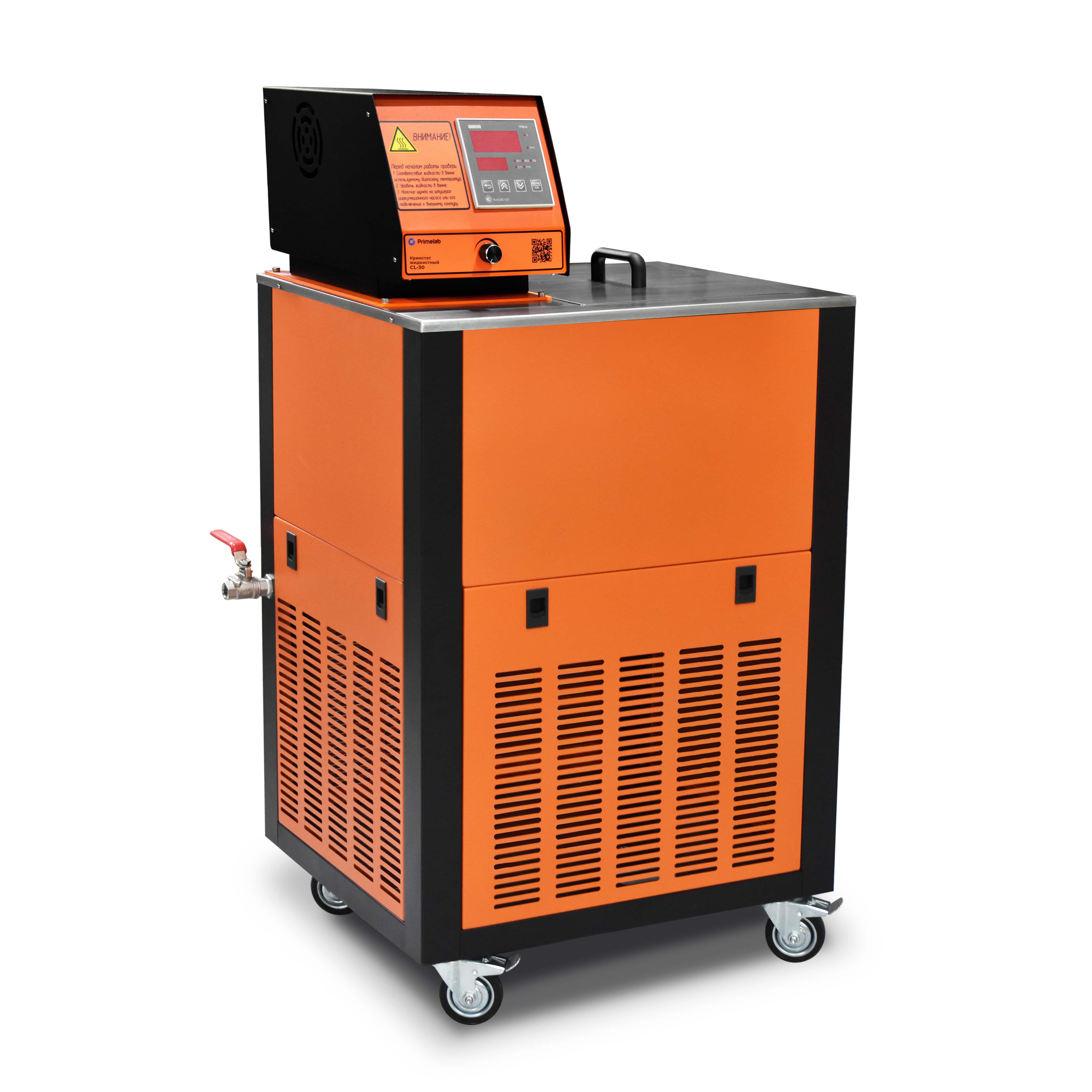Catalog
Search
92 products
View:
- Selected: 0Applying
- Selected: 0Names
- Selected: 0Manufacturer
- Selected: 0Made in
- Selected: 1Additional
View:
92 products
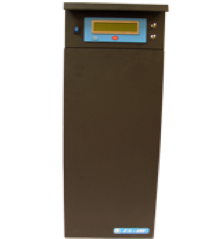
Nitrogen generator GA-400
from
408 000 ₽
Nitrogen generators are designed to create an inert atmosphere, fill low-pressure tanks and other applications that require a large, by laboratory standards, nitrogen consumption with reduced requirements for its purity.
The warranty period of operation of the generator is 12 months from the date of sale by the manufacturer.
Technical specifications
Volume fraction of nitrogen is not less than % by volume (including impurities of inert gases — argon, neon, helium) 99.5
Volume fraction of oxygen is not more than 0.5 % vol.
Volume fraction of water vapor is not more than, % vol. 0.002 (20 ppm)
Maximum nitrogen capacity is at least 400 l/h (6.66 l/min)
The time of setting the operating mode for single-shift operation is no more than, min, 30
Nominal inlet air pressure is 6 ati
Maximum allowable inlet air pressure is 8 ati
Minimum inlet air pressure is 5.5 ati
Compressed air consumption, at nominal inlet pressure and maximum flow rate is no more than 3000 l/h (50 l/min)
Power consumption is not more than 100 VA
Overall dimensions, (width x depth x height) are not more than 230x580x680 mm;
Weight is not more than 30 kg
Working conditions:
ambient temperature, C°, from +10 to +35
Electric power supply from
single-phase AC mains voltage, V, 220± 10%
and frequency, Hz, 50 ± 1
Average full service life is at least 6 years
The generator for electrical safety meets the requirements of Class 1, type H according to GOST 12.2.025-76
NPP Himelektronika
Moscow
Produced in: Moscow
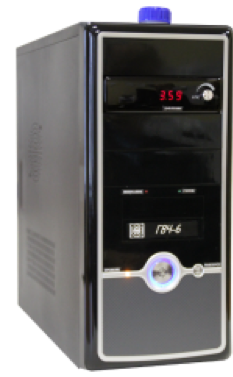
Hydrogen Generators GVCH-6
from
126 000 ₽
The GVCH-6 hydrogen generators are designed to power flame ionization detectors. They are equipped with a four-stage gas purification system. The hydrogen capacity is 6 liters/hour (100 ml/min). They have smooth adjustment and digital indication of the output pressure.
Technical specifications
The brand of produced hydrogen "A" according to GOST 3022-80
Purity of hydrogen in terms of dry gas is about 99.995%
The concentration of water vapor at 20 ° C and 1.0 ati is not more than 20 ppm
Total hydrogen capacity reduced to normal conditions is 6 l/h
The range of the specified output pressure of hydrogen is from 1.5 to 6.0 ati
Stability of the output pressure of hydrogen is not worse than ± 0.02 ati
The time of setting the operating mode is no more than 30 min
Volume of bidistilled water to be filled is 1 l
Consumption of bidistilled water is no more thann 0.01 l/hour
Consumption of bidistilled water is 1.6 g/l of hydrogen
Average power consumption in stationary mode is no more than 100 VA
Maximum power consumption (at startup) is no more than 150 VA
Overall dimensions of the generator, (width x depth x height) are not more than 180x450x435 mm
The mass of the generator is not more than 11 kg
Working conditions:
ambient temperature, °C from +10 to +35
Power supply from single-phase mains:
AC voltage, 220±10%
and frequency, Hz 50 ± 1
NPP Himelektronika
Moscow
Produced in: Moscow
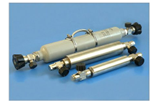
GAS SAMPLER
They are used for sampling natural and liquefied gas. In the company "Meta-chrome" you can buy the following gas samplers:
PGO-50M;
PGO-400;
BDP 12-2-9,8 (aluminum, subcompact);
PU.
The PGO-50 M, PGO-400 and PU models are used to take samples of liquefied hydrocarbon gases that are affected by the overpressure of stationary tanks and or their own vapors. Sampling is carried out according to GOST 14921-78.
The BTP 12-2-9.8 device is used for sampling, storing and transporting samples of gases that are under pressure. The device is made of aluminum and is designed for a small liter. Sampling is carried out according to GOST 31370-2008.
INDICATOR BDP7 BDP7 BDP12 BDP12 BDP16 PGO-400 PGO-50M
Volume, l. 0,7 1 2 4 10 0,4 0,05
Outer diameter, mm 70 70 120 120 160 50 35
Length, mm 360 480 368 593 800 400 325
Working pressure, MPa 9.8 5.0 9.0
The number of refills up to the operating pressure, times at least 5000
Case material AMg6M 12X18
NPF "META-KHROM"
Yoshkar-Ola
Produced in: Yoshkar-Ola, Mari El
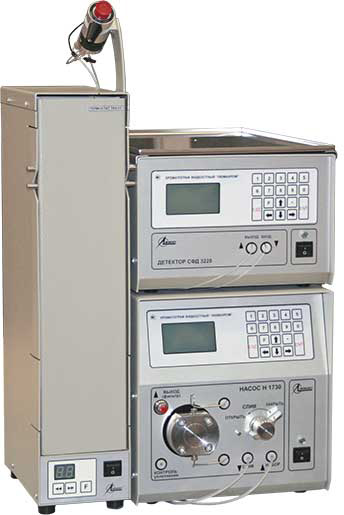
Liquid chromatograph "LUMACHROM®"
1 supp.
Technical specifications:
Operating spectral range, nm from 190 to 360
Limits of permissible absolute error of wavelength setting, nm ± 5
Detection limit of anthracene (wavelength 252 nm), ng/cm3, no more than 1
The limit of the permissible value of the relative mean square deviation of the output signal (n =5), %
of the retention
time over the peak area of 1.5
2
Limits of the permissible value of the relative change in the output signal (peak area) for 4 hours of continuous operation, % ± 5
Overall dimensions (LxWxH), mm, no more:
270x420x190
Weight, kg, not more than 9.5
Power consumption, V· A, not more than 50
Lumeks
Saint Petersburg
Produced in: Saint Petersburg

Pure Hydrogen Generator GVCH-36D
from
315 600 ₽
The generator is designed to produce hydrogen of the highest purity used to power analytical instruments (chromatographs, gas analyzers, etc.).
Technical specifications
Purity of hydrogen in terms of dry gas is about 99.998%
The concentration of water vapor at 20 OC and 1atm is not more than 10 ppm
In the output pressure stabilization mode
The range of the specified output pressure of hydrogen is from 1.5 to 6.1 ati
Stability of the output pressure of hydrogen is not worse than ± 0.02 ati
Maximum hydrogen capacity reduced to normal conditions is 36 l/h
The time of setting the operating mode, with the output turned off is no more than 20 minutes
In the performance stabilization mode:
The range of the specified hydrogen performance is from 0 to 36 l/h
Maximum developed pressure in performance mode is 5.0 ati
Volume of distilled water to be poured is 1.0 l
Distilled water consumption is not more than 0.06 l/hour
Water consumption is 2.4 g/l of hydrogen
The average life of a replaceable deionization filter cartridge (at maximum performance and single-shift operation) is at least 0.5 years
Average power consumption:
in stationary mode is no more than 250 VA
maximum (at startup) is no more than 300 VA
Overall dimensions of the generator, (width x depth x height) are not more than 230x470x450 mm
The mass of the generator is not more than 18 kg
Operating conditions:
ambient temperature, °C, from +10 to +35
powered by single-phase AC voltage, V, 220 (+10 -15)%
and frequency, Hz, 50 +1
The generator for electrical safety meets the requirements of Class 1, type H according to GOST 12.2.025-76
NPP Himelektronika
Moscow
Produced in: Moscow

THERMAL DESORBER TDS-2
TDS-2 is a syringe (see Fig. 1), which is installed on the evaporator of the chromatograph. The device is equipped with a crane that cuts off the carrier gas line when removing the rod with the sorption tube from the thermal desorber. When the tap is open, the stem is lowered to the lower position and the sorption tube is inserted into the evaporator brought to the desired temperature. In the conditions of the upper position of the rod, it is also possible to displace air by purging the sorption tube with a carrier gas.
Technical characteristics of TDS-2
The heating time to the desorption temperature is no more than 1 sec.
The cooling time when moving to a cold zone is no more than 10 seconds.
Outer diameter 5-0.1 mm
Dimensions of the sorbent chamber: diameter 3.4+0.3 mm
length 52 mm (470 µl)
Volume (for solid samples) 90 µl
Operating temperature ranges* from 50° to 400 °C
Overall dimensions (height with the rod fully extended) 320 mm.
Weight 0.325 kg.
NPF "META-KHROM"
Yoshkar-Ola
Produced in: Yoshkar-Ola, Mari El
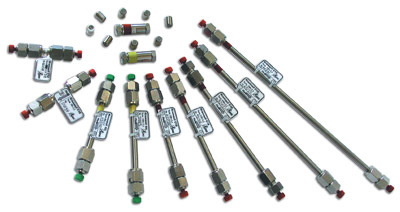
Chromatographic columns for HPLC
1 supp.
Variants of execution: - silica gel with grafted octadecyl groups (C18, RP, ODS) - for the variant of reversed-phase HPLC (OF HPLC);
- unmodified silica gel (SIL) – for normal-phase HPLC (NF HPLC).
Lumeks
Saint Petersburg
Produced in: Saint Petersburg

MAESTRO-αMS gas chromatograph by Interlab
We offer expert laboratories of physicochemical methods of analysis a gas chromatograph with a quadrupole mass spectrometric detector «MAESTRO-αMS». Quadrupole GC-MS «MAESTRO-αMS» is in demand for targeted research (screening) and non-targeted search. In targeted studies, it is necessary to detect given target compounds in samples of various nature and origin at the level of residual amounts, for example, several picograms of the target compound in the injected 1 μl of liquid sample. Most often, targeted research is carried out in the following areas of laboratory screening: ecology, food safety, clinical monitoring, narcology, doping control, production control of various raw materials. In targeted studies, it is often required not only to confirm the presence of a compound in a sample, but also to determine the level of its content quantitatively, since both the list of target compounds and the permissible level of their presence in the sample are specified by regulatory documents. Quantitative analysis requires standards for the substances you are looking for. When conducting a non-target search, as a rule, it is required to analyze a sample of unknown composition, in other words, to find as many compounds as possible in the sample and identify (identify) each of them. Since the identification of a detected compound is carried out by comparing its experimental mass spectrum with the spectrum of a pure substance obtained under standard conditions, this task requires reference libraries of mass spectra of pure substances, as well as tools for working with mass spectra, for example: algorithms for cleaning experimental mass spectra from background and spectral noise (mass spectrum deconvolution algorithms), library search and comparison algorithms. An off-target search is called a qualitative analysis, since the researcher is primarily interested in the list of detected substances, and not in the quantitative assessment of their content in the sample. When creating MAESTRO-αMS, we took into account our own many years of experience in operating imported analogues. We have made the device inexpensive. We have made the device compact: The modern design of the device made it possible to make the MAESTRO-αMS really compact, so that the device occupies the smallest possible area on the laboratory table. The layout of the device allows you to remove the ion source on the front flange for cleaning and replacing the cathodes, if necessary. We have reduced the cost of operation: When developing the MAESTRO-αMS, we sought to increase the resistance of the device to sample matrices and use a minimum of consumable materials in order to eliminate downtime for maintenance and replacement. As a result, we have created an extremely stable ion source and a perpetual photomultiplier detector. We have created special software: Even at the first acquaintance with the software, it becomes obvious that being in the window of each button and each parameter to be changed is expedient and logical. Our software product was created for the convenience of the operator, so we implemented the necessary and eliminated the unnecessary. We used the principle of one active window, in which the operator moves sequentially step by step, performing hardware settings, setting the data collection method, subsequent processing algorithms, templates for presenting the results. MAESTRO-αMS offers a wide range of scanning modes, built-in algorithms for working with mass spectral data, convenient unloading of initial data arrays for their processing in specialized software packages, graphics export for presentations and scientific publications. You can use several libraries of mass spectra at the same time, or create your own for your typical tasks. Finally, we provide a 5-day training course for professionals who want to understand the theoretical foundations of the method and their implementation in the hardware of modern quadrupole GC/MS. The volume and depth of presentation of the material from the developers of the device is intended to lay the foundation for the effective use of «MAESTRO-αMS» in the future. Some technical characteristics of MAESTRO-αMS: • Instrumental detection limit (SIM, OFN @272 m/z ) < 10 fg; • Scan modes: scan for selected ions, full scan in a given mass range, combined scan mode; • The number of simultaneously connected libraries of mass spectra is at least 10.
INTERLAB
Moscow
Produced in: Moscow
